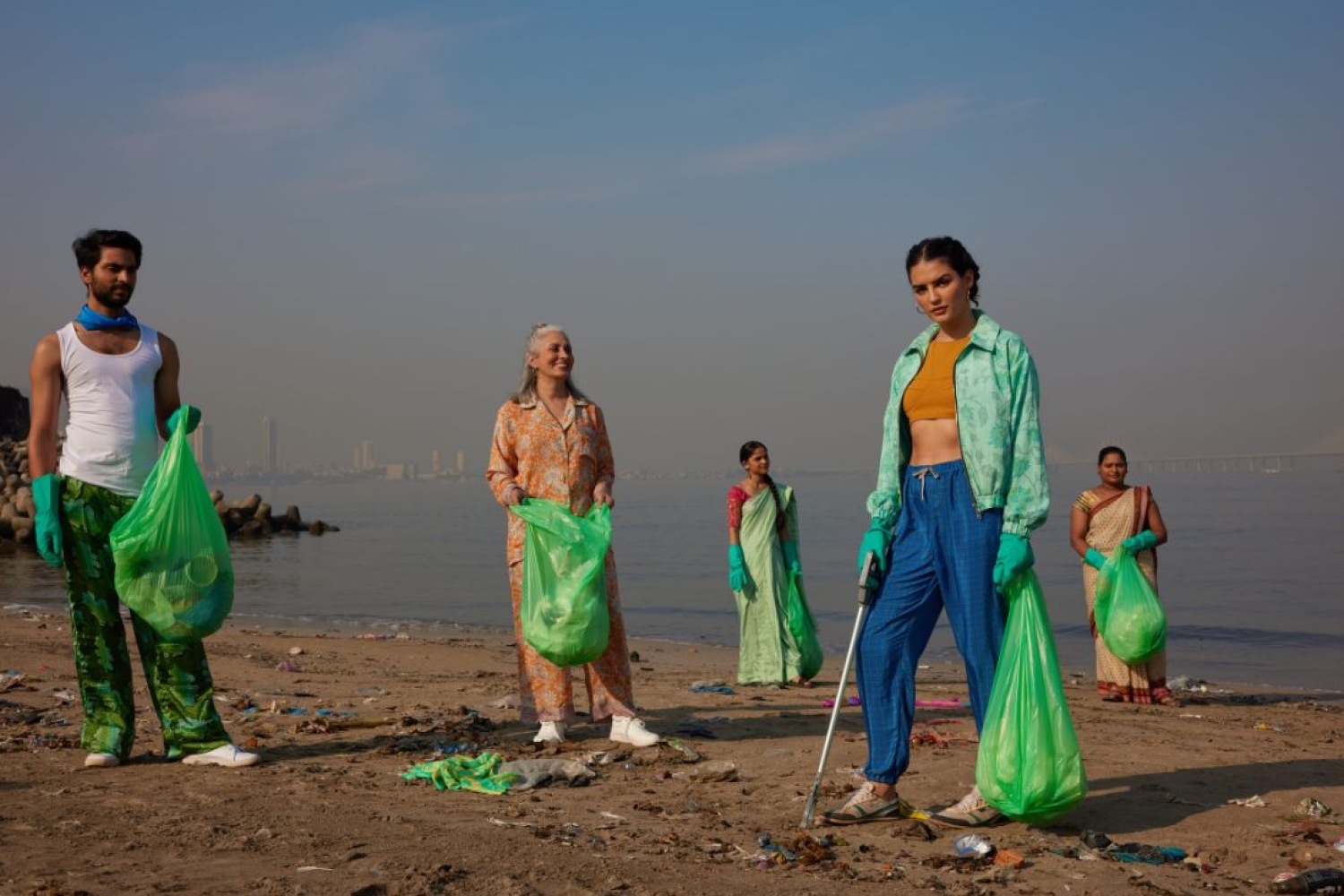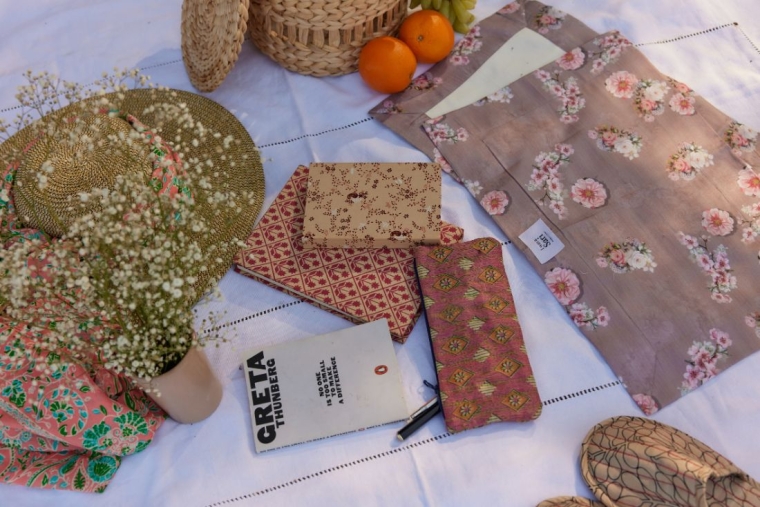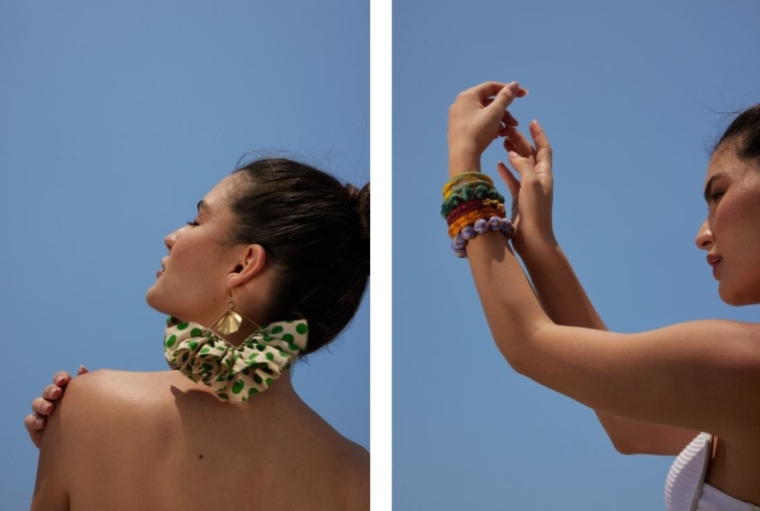

I was a Sari is a Mumbai-based sustainable fashion brand conceptualized in Milan by founder Stephano Funari. The brand is an artful combination of female empowerment, traditional flair, and sustainable manufacturing.
Described as ‘Fashion for Planet Lovers’, I was a Sari is a certified B corp brand that emphasizes a holistic focus on environmental care and protection. They give old saris new lives in the shape of funky earrings, accessories, bags, wallets, and clothes. This creative spin on recycling our traditional five meters of cloth is a brilliant proposition that saves on raw materials and helps reduce the overall carbon footprint of the manufacturing process.
The beauty of this brand lies in its ability to give a fresh life to traditional artisanal work! By combining modern fashion trends with the material of the past, the label blends the elegance of authentic Indian taste with the practicality of modern style.
I was a Sari runs on the basic tenets of zero waste and respect for Indian artisans. What made you choose the ‘sari’ as a base material for this venture?
When we first started this venture, we had two basic principles in mind. The first is that fashion can be more respectful to the planet, and the second, is that fashion can be more respectful to the people that function within the industry as well. We noticed that there was a massive market for preloved saris in Mumbai, which was going into the second-hand market. This was in 2012, and we noticed that there was a significant market for the sari, as it held great cultural significance. These five meters of fabric hold a lot of potential and are representative of our greater cultural identity. The project also started, as a means to give women from marginalized communities, voices and resources to uplift themselves. The sari becomes emblematic of these Indian women who strive for financial independence.

What is the creative process behind the newer pieces that you upcycle from old saris?
Our founder is from Milan and when he first moved to India he worked with NGOs to set up shelters for street children. He soon realized that to empower these children, one had to empower their mothers, and this is how we came up with the concept of upscaling female artisans. Our design aesthetic is still however quite international as our primary target market is Europe. We started in Italy, and our reach now extends to Switzerland, Germany, the USA, the UK, and Singapore.
Our designers are based in Milan and our clientele is largely based in the West, hence our aesthetic veers towards more contemporary designs. We have also been in collaboration with Gucci since 2018 as part of their CSR manifesto. They help provide training programs for our artisans, to elevate the embroidery skills of our female artisans. The ‘Now I Can’ project aims to help women carve a niche in the male-dominated embroidery sector in the garment industry, providing them with the necessary skills for financial independence.
When we look at creating a new product, we have to take into account the boundaries that come with working with upscaled fabrics, and this shapes our design process as well. There is a unique process flow that comes into play when working with these garments, we have to first wash and quality check them and then work around the ‘flaws’ of each piece. Designing within the principles of sustainability poses certain limitations but also opens up greater avenues for creativity.

What made you branch out into accessories and jewelry from the traditional framework of apparel?
Working with sustainable materials can be tricky. Our zero waste principle urges us to work within the boundaries of useable material that is generated from pre-loved saris. Our teams find new ways to use smaller, leftover materials to ensure that no scrap goes to waste. Out of five meters of cloth. Only about three meters is useable to generate a new item. The remnants, such as the borders of saris are redesigned into smaller products like pleated earrings and other jewelry items. We upcycle these scraps with creative techniques to give them a new life. For example, the incredible small pieces of cloth that cannot even be used to make earrings are utilized as fringes for our fringed bag collection instead.
Zero waste is a principle being adopted globally as a way of life, it is not a fad, but an integral lifestyle change. Whether it is a bookmark or a yoga mat holder, made out of recycled scraps of cloth, we believe that a mindset of sustainability can be adopted in every sphere of life.
Another way that we ensure zero waste within the organization is our partnership with Goonj, wherein we utilize leftover cloth to make sanctuary napkins for rural women. Additionally, we are launching a more lifestyle-centered approach to our brand with the launch of our homeware collection which is all set to release in September of this year.
How does one balance the old with the new in a brand like this?
I was a Sari is a movement brand that aims to change the way we look at fashion and redefine the pace of the industry. Because we work with pre-loved saris, we don't distinguish between the old and the new, as the two seem to blend, with the way that we work. We believe that each sari has a story to tell, along with each of the women who work with us.
Our name is I was a Sari, and we are very cognizant of the fact that while everything has a past, there is always hope for a brighter future. Our mission is to provide a promising and hopeful future for the fashion industry.
What is the essence of I was a Sari?
“Fashion that respects the planet and its people.”
Words Aliya Anand
Date 21.06.2024